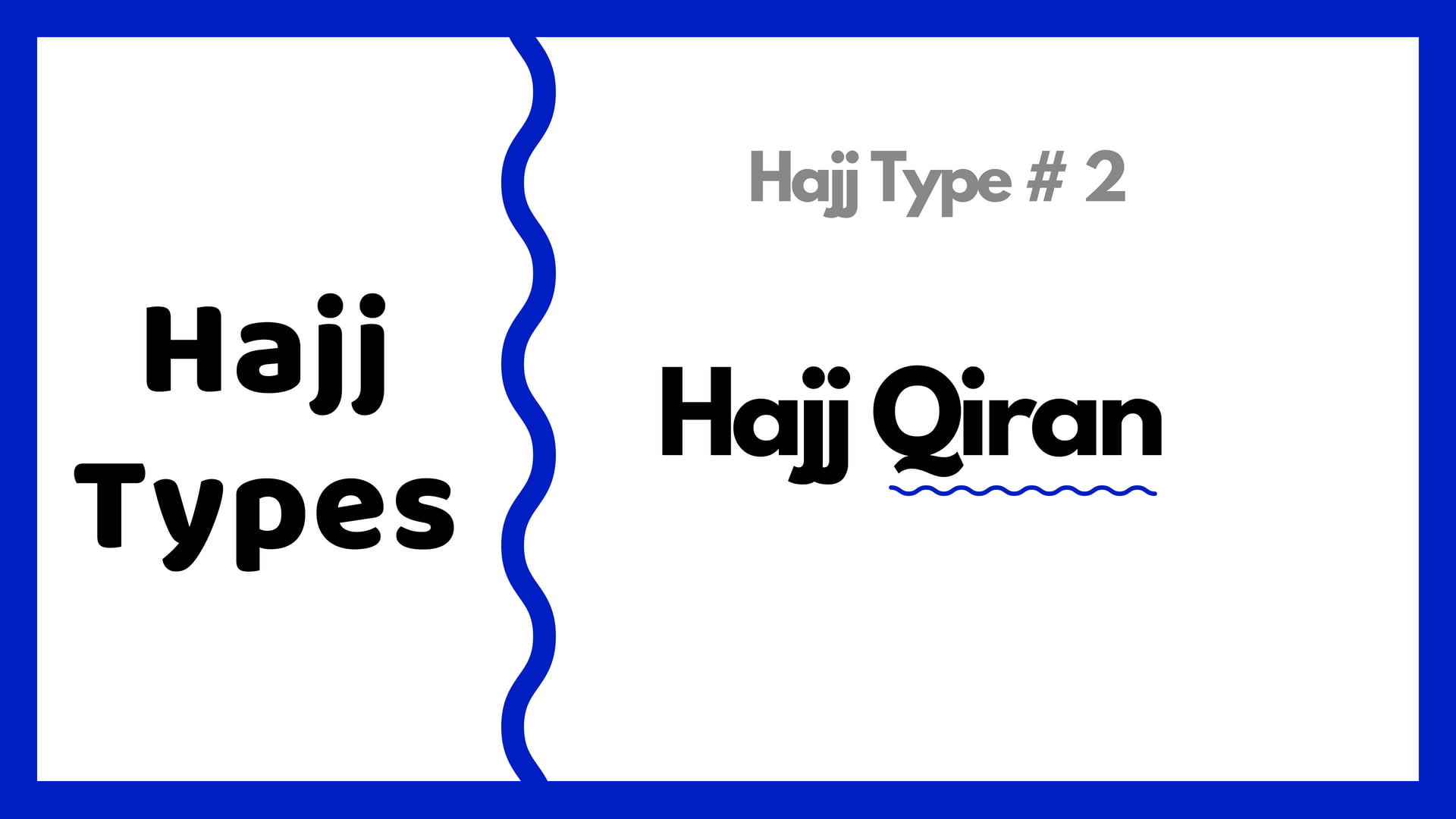There are three types of Hajj in Islam. Hajj Ifrad, Hajj Qiran, and Hajj Tamattu, and the details of all these types of Hajj.
Hajj is one of the five pillars of Islam, and today we are going to talk about its types in detail and in easy words to help people understand what is the basic difference between them.
1. Hajj Ifrad

Hajj Ifrad means Isolated Hajj, and this means that a person just performs Hajj but does not perform Umrah.
The person who performs Hajj Ifrad is known as Mufrid. This is for the people who are living inside the boundaries of Masjid al-Haram (i.e. People living in Jeddah). The person will wear Ihram to perform Hajj only.
This person can not perform Umrah, and if he performs Umrah, then he is no longer performing Hajj Ifrad. This person can not leave Ihram until the stoning of the devil ritual.
2. Hajj Qiran

Hajj Qiran is also known as accompanied Hajj. It is for the people who do not live near Masjid Al Haram. The person who performs this type of Hajj should wear Ihram with the intention of Umrah and Hajj, and both have to be performed in the same Ihram. One wears the Ihram and then leaves the ihram after Hajj and Umrah are completed.
The person can not leave Ihram until both of these things (Hajj and Umrah) are completed.
3. Hajj Tamattu

When you perform Hajj with Umrah, it becomes Hajj Tamattu, and it is also known as Mutamatti (Meaning enjoyable hajj). People who come from abroad to perform Hajj usually do Hajj Tamattu because it includes Umrah as well. It to be noted that Umrah has to be done before Hajj days. (One has to perform Hajj Tamattu in two different Ihrams, One for Umrah and one for Hajj.)
Subscribe to our channels on WhatsApp, Google News, Facebook and Instagram.Discover more from The Islamic Information
Subscribe to get the latest posts sent to your email.












